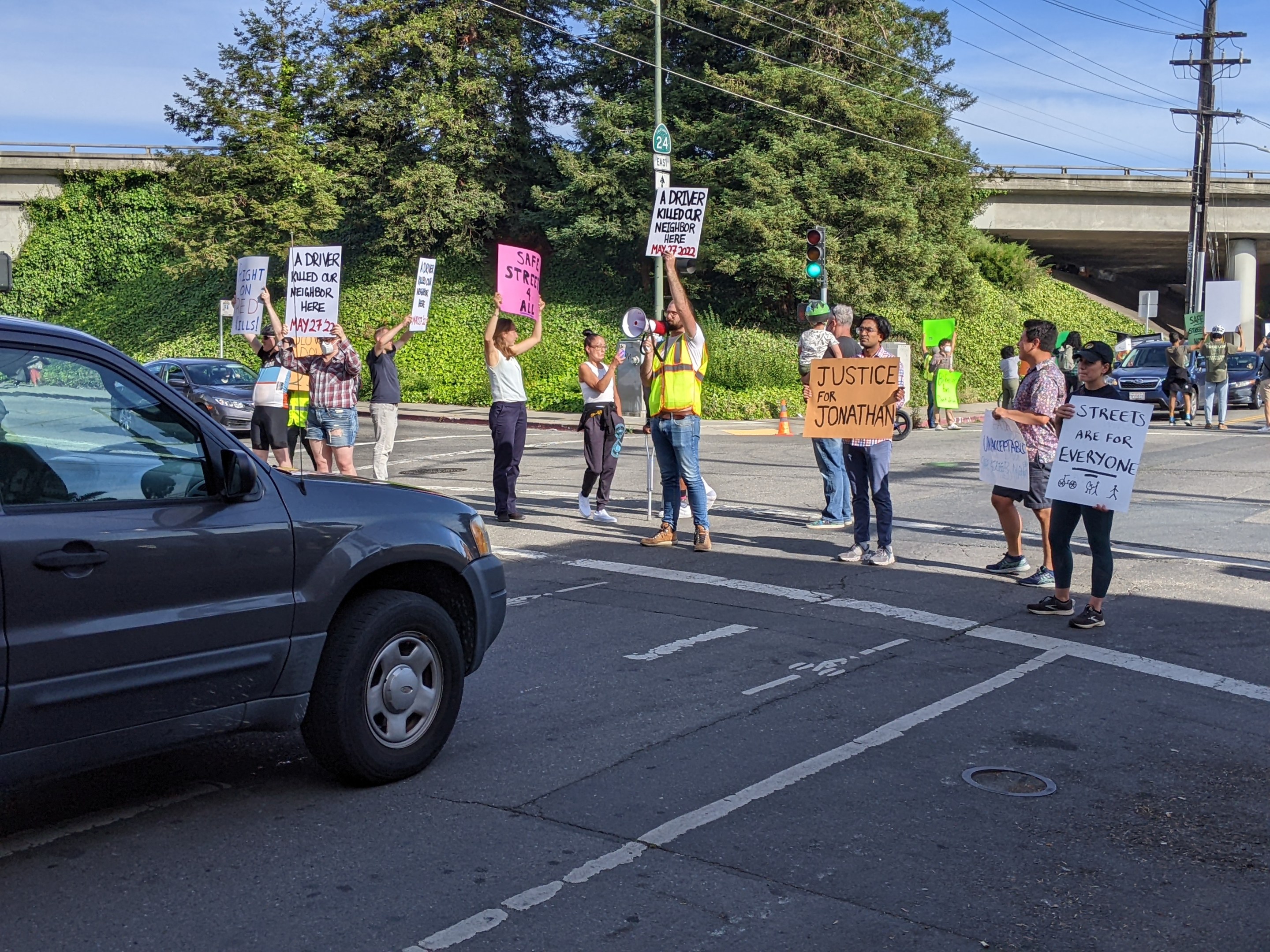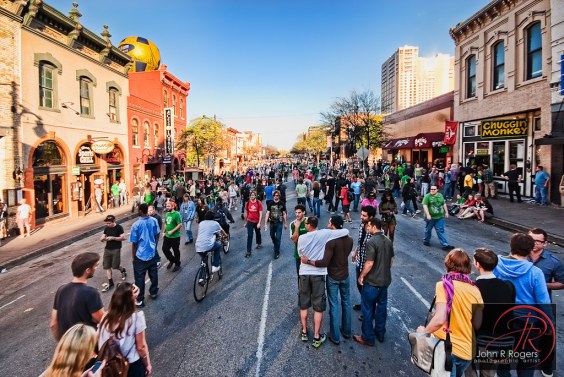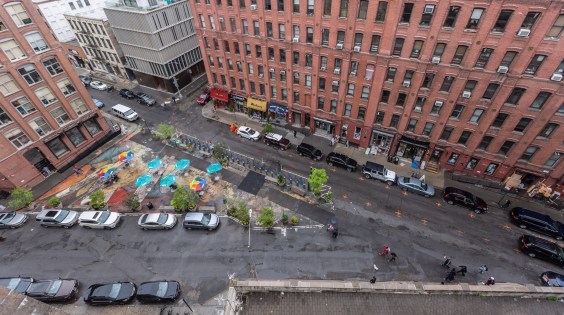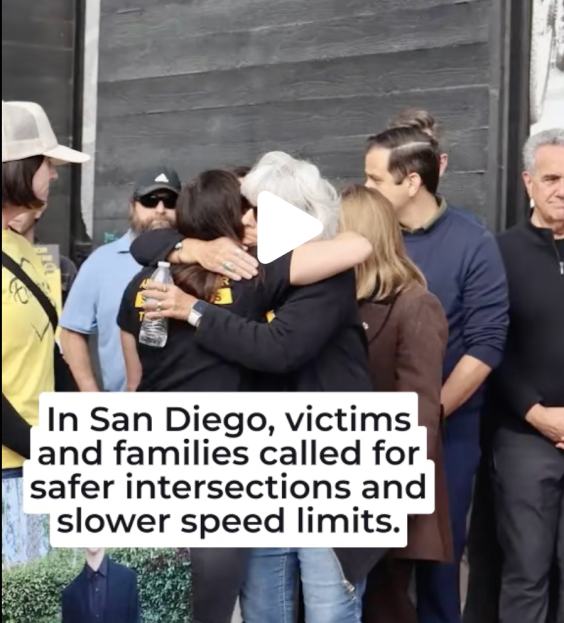Some 30 advocates demonstrated for protected bike lanes and safer intersections at Shattuck and 55th Wednesday evening, site of last Friday night's tragic collision that took the life of cyclist Jonathan Waters, 60. "We want justice for Jonathan," said Rachit Agarwal, one of the demonstrators. "There should be no right on red, protected bike lanes, and lower speed limits."
The intersection, as with so many others, is notorious in Oakland. Mical Okbit runs the Shalom Cafe on the corner. "People are crazy," she told Streetsblog. "I'll watch four, five, six near-accidents every day here." Okbit said she's frightened every time she tries to cross the street and hangs as far back on the narrow sidewalks as she can waiting for the light.
"They [motorists] don't stop, even at red lights," her co-owner and husband Simon Okbit added. Mical Okbit added that she fears eventually a car is going to plow into their store.
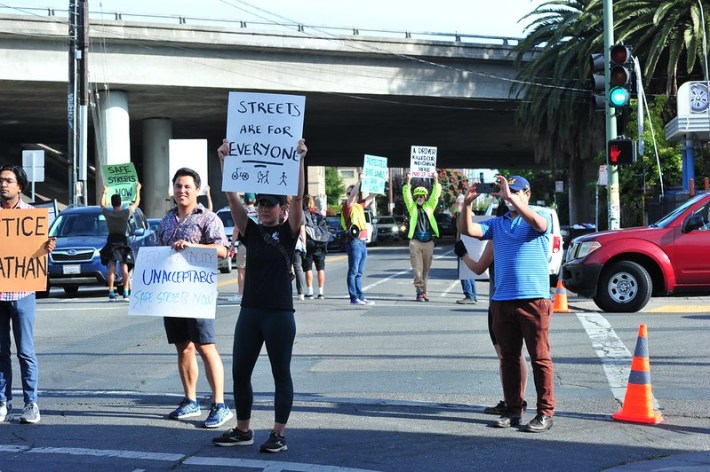
Bob Berry, owner of a towing company across the street from Shalom, expressed similar concerns about the safety of the street in a follow-up phone interview with Streetsblog. "We don't have traffic enforcement any longer in the city of Oakland or Berkeley." He added that he stresses to his tow-truck drivers to take it slow and always check their blind spots for cyclists, pedestrians, and other motorists.
Berry saw a recording of the crash on his security cameras. He said it did not appear the motorist was speeding. "The van looked just like the car that preceded it, moving at the normal speed, they both [the cyclist and the motorist] had the light."
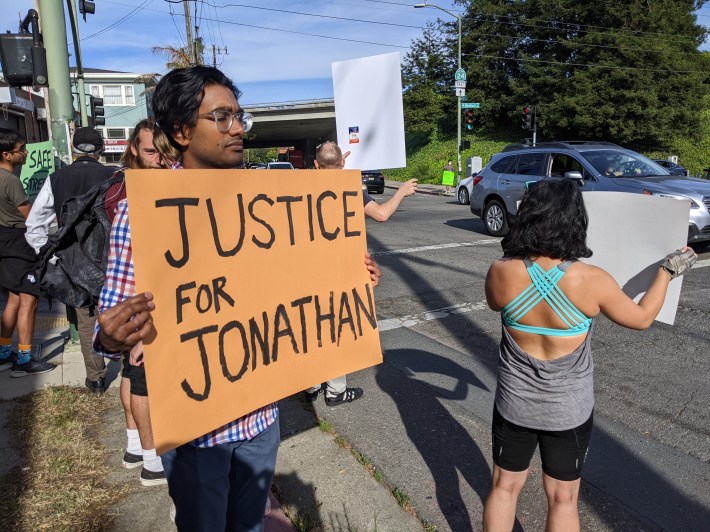
According to Berry, Waters must have misjudged and turned into the path of the oncoming motorist. "The van [driver] had no reason to believe the guy was going to turn left."
Advocates, meanwhile, complained that the intersection is just poorly designed in every respect--something Streetsblog absolutely concurs with. The sidewalks are ridiculously narrow. There are no bulb-outs or any other measures to force motorists to slow. The painted bike lanes have all but completely worn off--and are inappropriate for such a highly-traffic street to start with.
"This street is not designed to be safe for anybody," said George Spies, another of the demonstrators. "It's high speeds, lots of traffic, and lots of cyclists."
"I'm here for people who died. For people who can't speak for themselves," said Kevin Neptune Jenkins, another demonstrator. Jenkins should know--he was t-boned by a motorist in May at 12th and Castro in West Oakland. His leg was broken, requiring surgery to repair the bone. "I had the green. She stopped and told cops she was driving 25. But the EMTs said it was way more like 40." Fortunately, Jenkins was clipped near the back of his bike, which was destroyed, but his body was spared the full energy of the impact. "I should be dead."
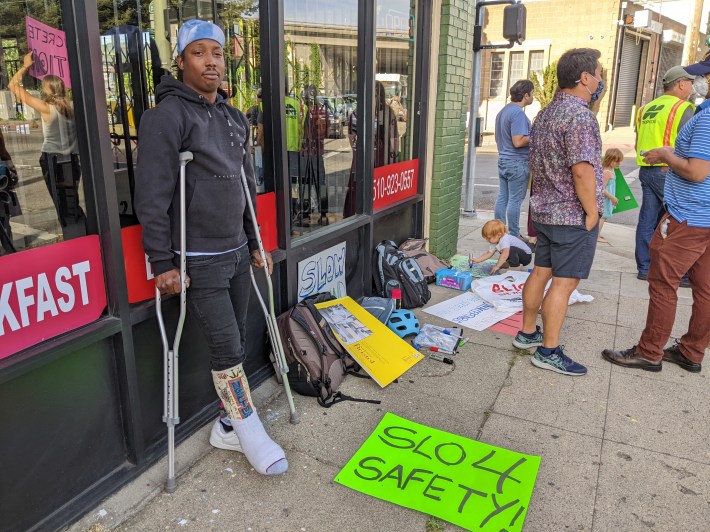
City Councilperson Dan Kalb also participated in the demonstration. "I did a walk-through with OakDOT and we set aside an earmark of a few hundred thousand for bike safety," for the area he said. "But it's needed everywhere." He also said it's time to ramp up speed enforcement.
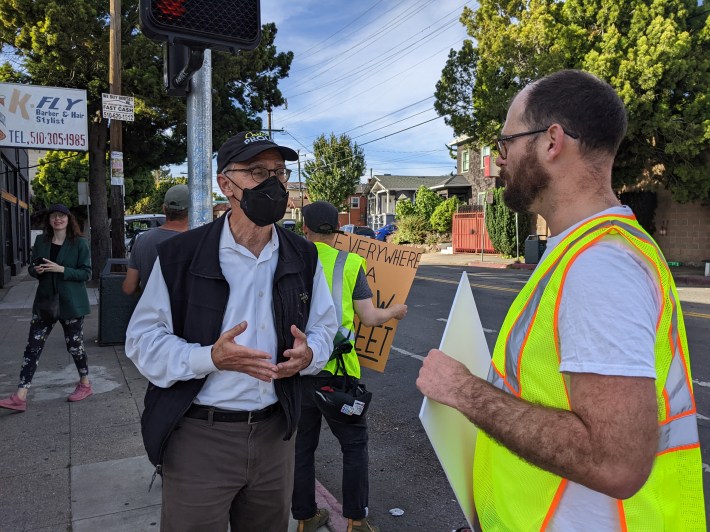
Bike East Bay's Robert Prinz, who also attended, said his organization is stressing infrastructure improvements, such as protected bike lanes. "Most businesses told me they are okay with losing parking" if that's what's required for safety.
Berry agreed there needs to be more enforcement, but also more patience from motorists and cyclists, adding "I don't think anything could have prevented this one."
Streetsblog, of course, disagrees with that--proper infrastructure, such as a protected intersection, could have, since Waters would not have been making a left turn from the center of the street. Protected intersections use a two-step turn for cyclists, more like how pedestrians cross, instead of expecting them to hover in the center of the street where they are most vulnerable to the slightest miscalculation. Either way, protected intersections reduce the potential conflict area and, if properly designed, force motorists to slow down at key points of conflict.
Others at the demonstration opined that a traffic circle might be appropriate to force motorists to proceed with more caution.
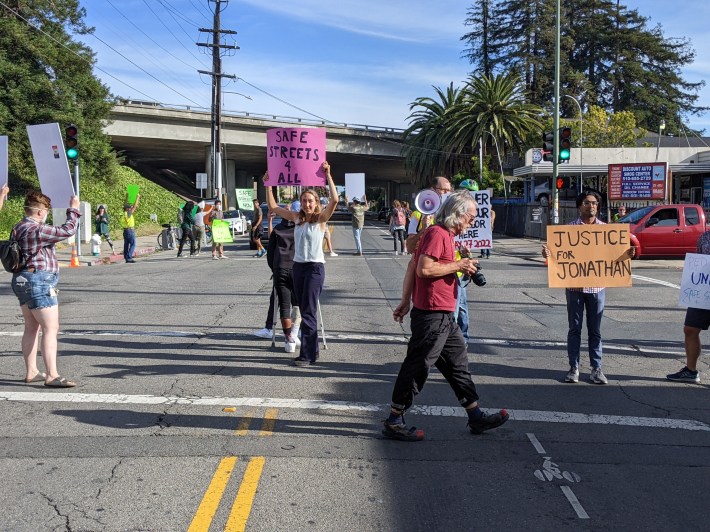
Whatever improvements are ultimately determined most appropriate, "we need improvements all over the town," said advocate Tim Courtney, also from West Oakland. He added that intersections should be protected with concrete that "drivers respect." In his view, this can be done quickly using prefabbed concrete blocks that can be dropped into place.
It's going to take a huge effort, but "the city of Oakland can be a place where nobody is killed," said Bryan Culbertson, one of the protest organizers.
